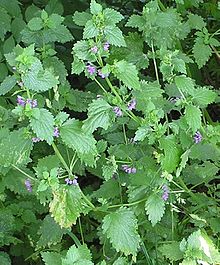
Satureja is a genus of aromatic plants of the family Lamiaceae, related to rosemary and thyme. It is native to North Africa, southern and southeastern Europe, the Middle East, and Central Asia. A few New World species were formerly included in Satureja, but they have all been moved to other genera. Several species are cultivated as culinary herbs called savory, and they have become established in the wild in a few places.

Marrubium is a genus of flowering plants in the family Lamiaceae, native to temperate regions of Europe, North Africa, and Asia as far east as the Xinjiang region of western China. A few species are also naturalized in North and South America.

Lamium (dead-nettles) is a genus of about 30 species of flowering plants in the family Lamiaceae, of which it is the type genus. They are all herbaceous plants native to Europe, Asia, and northern Africa, but several have become very successful weeds of crop fields and are now widely naturalised across much of the temperate world.
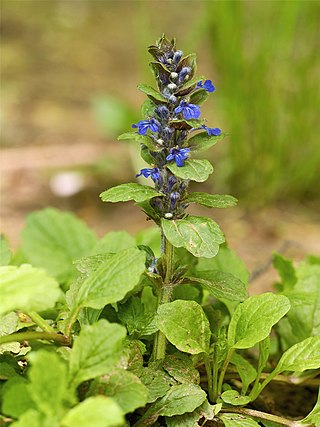
Ajuga, also known as bugleweed, ground pine, carpet bugle, or just bugle, is a genus of flowering plants in the Ajugeae tribe of the mint family Lamiaceae. There are over 60 species of annual or perennial, mostly herbaceous plants. They are native to Europe, Asia, Africa, and Australia.

Onopordum, or cottonthistle, is a genus of plants in the tribe Cardueae within the family Asteraceae. They are native to southern Europe, northern Africa, the Canary Islands, the Caucasus, and southwest and central Asia. They grow on disturbed land, roadsides, arable land and pastures.

Gagea is a large genus of spring flowers in the lily family. It is found primarily in Eurasia with a few species extending into North Africa and one species in North America.
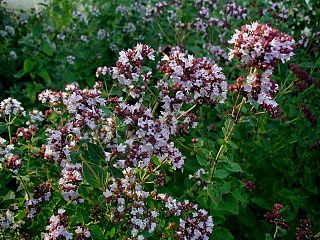
Origanum is a genus of herbaceous perennials and subshrubs in the family Lamiaceae, native to Europe, North Africa, and much of temperate Asia, where they are found in open or mountainous habitats. A few species also naturalized in scattered locations in North America and other regions.
Horehound or hoarhound may refer to:

Ballota nigra, black horehound, is a perennial herb of the family Lamiaceae. It is native to the Mediterranean region and to central Asia and it can be found throughout Europe. It is also naturalized in Argentina, New Zealand, and the Eastern United States. It blooms in the Northern Hemisphere from May to August.
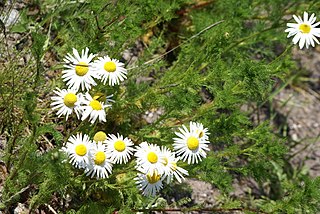
Tripleurospermum is a genus in the chamomile tribe within the sunflower family. Mayweed is a common name for plants in this genus.

Lallemantia is a genus of flowering plants in the family Lamiaceae. It is named after the German botanist Julius Léopold Eduard Avé-Lallemant.

Micromeria is a genus of flowering plants in the mint family, Lamiaceae, widespread across Europe, Asia, Africa, and North America, with a center of diversity in the Mediterranean region and the Canary Islands. It is sometimes placed within the genus Satureja. The name is derived from the Greek words μῑκρος (mīkros), meaning "small," and μερίς (meris), meaning "portion," referring to the leaves and flowers. Common names include savory and whitweed.
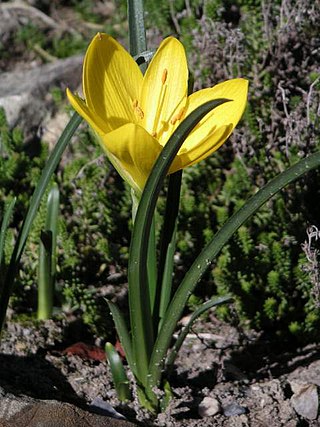
Sternbergia is a genus of Eurasian and North African plants in the Amaryllis family, subfamily Amaryllidoideae.

Leopoldia is a genus of bulbous perennial plants in the family Asparagaceae, subfamily Scilloideae. The genus is widespread around the Mediterranean region and neighboring lands, from the Canary Islands to Iran.

Callipeltis is a genus of flowering plants in the family Rubiaceae. It was originally described in 1829. The genus is found in Spain, North Africa, the Middle East, the Arabian Peninsula, and Central Asia as far east as Pakistan and Kazakhstan.

Ziziphora are a genus of annual or perennial herbs or subshrubs in the family Lamiaceae. Ziziphora has aromatic leaves; they are found in open and often xeric habitats in Southern and Eastern Europe, North-West Africa and Asia to the Himalayas and Altai mountains.
Cyclotrichium is a genus of plants in the Lamiaceae, first described as a genus in 1953. The entire genus is endemic to southwestern Asia.
- Cyclotrichium depauperatum(Bunge) Manden. & Scheng. - western Iran
- Cyclotrichium glabrescens(Boiss. ex Rech.f.) Leblebici - southeastern Turkey
- Cyclotrichium haussknechtii(Bunge) Manden. & Scheng. - western Iran
- Cyclotrichium leucotrichum(Stapf ex Rech.f.) Leblebici - Iran, Iraq, Turkey
- Cyclotrichium longiflorumLeblebici - Iran, Iraq, Turkey
- Cyclotrichium niveum(Boiss.) Manden. & Scheng - eastern Turkey
- Cyclotrichium origanifolium(Labill.) Manden. & Scheng. - Lebanon, Syria, southern Turkey
- Cyclotrichium stamineum(Boiss. & Hohen.) Manden. & Scheng. - Iraq, Turkey
- Cyclotrichium straussii(Bornm.) Rech.f. - western Iran

Thymbra, common name Mediterranean thyme, is a genus of plants in the family Lamiaceae. As currently categorized, the genus has seven species and one subspecies. It is native to the Mediterranean region of southern Europe, North Africa, and the Middle East.

The taxonomy of Tulipa places the genus in the family Liliaceae, and subdivides it as four subgenera, and comprises about 75 species.

Noaea is a genus of flowering plants belonging to the family Amaranthaceae. It is in the Salsoloideae subfamily.
